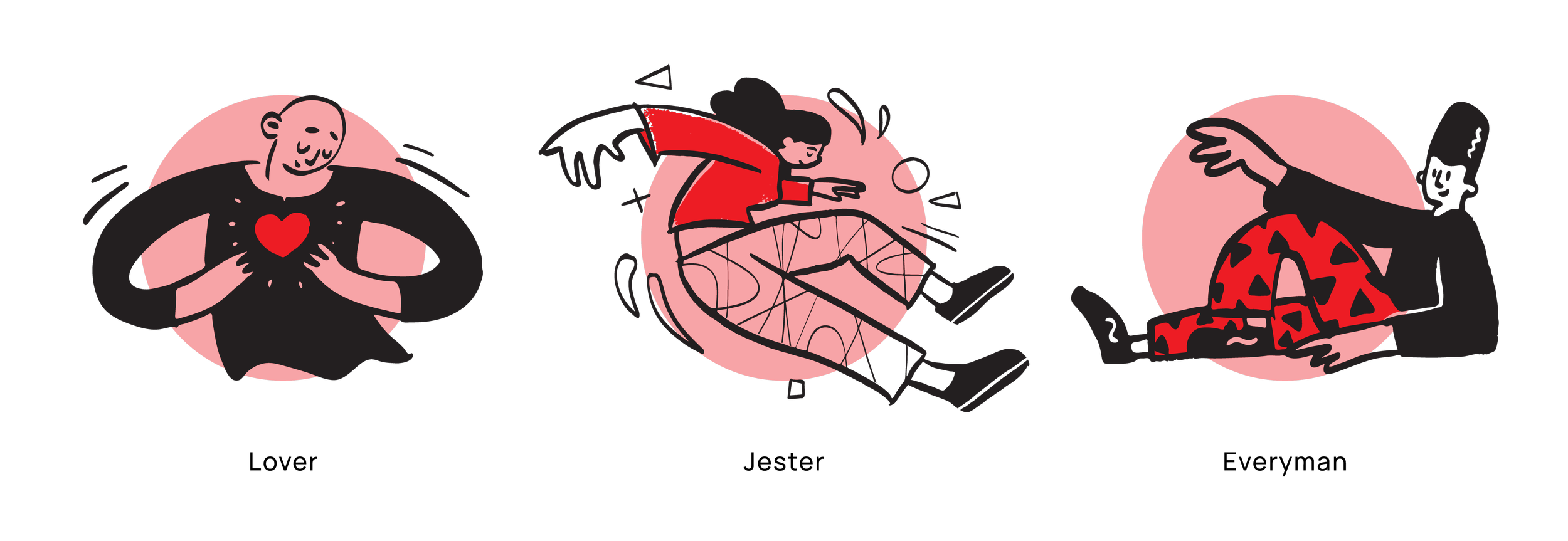In today’s crowded marketplace, standing out isn't just about being different—it’s about being meaningfully different in ways that matter to your audience. Strategic brand positioning requires a deep understanding of your competitive landscape and deliberate choices about where and how your brand can occupy a distinctive space in customers’ minds.
Understanding your competitive landscape
Effective brand positioning begins with thorough competitive analysis. Think of your market as a complex ecosystem where every brand occupies a specific niche. Your goal is to understand not just who your competitors are, but how they relate to each other and where opportunities exist for your brand to thrive.
Start by mapping your competitive landscape across multiple dimensions. Consider both direct competitors (those offering similar products or services) and indirect competitors (those solving the same customer problems in different ways).
For each competitor, examine:
Market presence and share — Look beyond simple revenue figures to understand how each competitor shows up. Which customer segments do they serve? What channels do they dominate? Understanding market presence helps reveal gaps and opportunities.
Brand voice and personality — Study how competitors express themselves through their communications. What tone do they use? What stories do they tell? How do they make their audience feel? This analysis reveals the emotional territories different brands occupy.
Visual identity systems — Analyze the visual languages competitors use. What colours dominate their industry? What design approaches do you think prevail? Understanding visual positioning helps identify opportunities for distinctive expression.
Key messages and claims — Document the core promises core promises and claims. What benefits do they emphasise? What proof points do they offer? This reveals how brands are attempting to differentiate themselves.
Creating competitor profiles — For each significant competitor, develop a detailed profile that captures their strategic position. Consider questions like:
What unique value do they offer their customers?
What customer pain points do they address?
How do they price relative to the market?
What is their reputation in the industry?
Where are they vulnerable?
Understanding Brand Archetypes
Jungian Archetypes were originally conceived by Psychiatrist Carl Jung to categorise personality types. First applied to the advertising industry in 1939, these archetypes help position products to foster greater brand loyalty. With our clients, we talk through each of the archetypes and explore which resonates most with their organisation.
Brands commonly fall into only one of the archetypes but might overlap two. We work with our clients to filter down to the essence of the brand, finding the personality archetype that will help direct us to the most compelling expression of the organisation.
The twelve brand archetypes are categorised into four types:
— Growth Archetypes
— Risk Taker Archetypes
— Connect Archetypes
— Structure Archetypes
Brand archetypes provide a powerful framework for understanding how different brands connect with audiences on a deep psychological level. Based on universal character patterns identified by Carl Jung, these archetypes help explain why certain brands resonate with specific audiences.
Each archetype represents a fundamental human desire and way of being in the world.
Growth Archetypes
Innocent — Brands that embody optimism, simplicity, and purity.
The Innocent archetype has the desire to be free and happy and to keep life simple. They are optimistic, positive and carefree. They fear being punished for doing things against the norm.
Example brands: Dove, McDonalds, Nintendo, Whole Foods
Sage — Brands that value knowledge, truth, and understanding.
The Sage brand archetype seeks out truth and is motivated to find wisdom. This archetype is most fulfilled by finding answers whilst being seen demonstrating intelligence and problem-solving skills.
Example brands: Google, TED, The Economist, FT
Explorer— Brands that celebrate adventure, discovery, and freedom.
The Explorer brand archetype craves adventure. They are independent and boldly ambitious. They see Adventure as a kind of enlightenment, explorers are motivated by self-discovery.
Example brands: Jeep, National Geographic, REI, DJI
Risk Taker Archetypes
Rebel — Brands that challenge conventions and value independence.
The rebel archetype is a radical thought leader. True revolutionaries and rebel brands have bold ideas but they can sometimes be doubted and thought of as risk-takers.
Example brands: Virgin, Harley Davidson, Diesel, Uber
Magician — Brands that promise transformation and special moments.
The magician brand strives to have a strong sense of place in the world and identifies most when creating and realising strong visions. Magician brand archetypes make innovation and transformation look easy, resonating most with technologically-led brands.
Example brands: Apple, Disney, Netflix, Dyson, Tesla, Masterclass
Hero — Brands that inspire achievement, courage, and triumph.
The Hero approaches any challenge, inspiring others along the way. Hero archetypes are motivated by the thought of leaving a mark on their industries, and the world. The hero fears failure and quitting.
Example brands: Nike, FedEx, Porsche, Strava
Connect Archetypes
Lover — Brands that celebrate beauty, pleasure, and emotional connection.
Motivated by a desire for intimacy, Lover archetypes want to feel attractive and are great at showing their affection. Passionate brands, Lover’s are naturally found within cosmetics, jewellery, and luxury fashion brands. Lover archetypes want to make people feel special.
Example brands: Godiva, Victoria’s Secret, Bumble, Chanel
Jester — Brands that bring joy, humor, and lightness to life.
The Jester lives in the moment. Jester’s are innovative, playful, expressive and fun loving. Jester’s are great at thinking differently, and doing things with their fun approach. Comfortable in their own skin, Jesters are unafraid to bend rules or stand out.
Example brands: Ben & Jerry’s, Mailchimp, M&Ms, Discord
Everyman — Brands that value authenticity, relatability, and inclusion.
The Everyman archetype aims to meet consumers at their level. The Everyman finds beauty in everyday life, has a respected value. Easily relatable, they fear standing out, and will do anything to fit in with their peers.
Example brands: Levi’s, Casio, Hulu, Gap, Muji, Toyota
Structure Archetypes
Caregiver — Brands focused on nurturing, protecting, and supporting others.
The Caregiver archetype finds purpose when helping others. Full of empathy and understanding, Caregivers suffer from the inability to say no even when it has a negative impact on themselves. Often associated with maternal brands, charities and not-for-profits.
Example brands: Nestle, Johnson & Johnson, Volvo, Pampers
Ruler — Brands that project authority, control, and premium quality.
The Ruler brand archetypes are motivated by their power and control. They are known for being leaders in their fields, confident and strong-minded.
Example brands: Rolex, Mercedes-Benz, Mont Blanc, Hermes
Creator — Brands that emphasize innovation, self-expression, and creativity.
A true visionary, the Creator is passionate about the process of creation. They are driven by unique ideas, and are artistic and creative in their purpose to achieve perfection.
Example brands: Youtube, Figma, Etsy, Canva
Archetype cards
We’ve created a free Brand Building Toolkit, that includes our brand archetype cards. These cards help you get started thinking about your brand’s personality.
— Brand Archetype Cards from our Brand Building Toolkit
Critically analyse your competitor’s brands
Plot your competitors on the brand archetype wheel. This reveals patterns in your market:
Are certain archetypes oversaturated?
Which archetypes are underrepresented?
Where do opportunities exist for distinctive positioning?
Finding your differentiation sweet spot
With a deep understanding of your competitive landscape and archetype mapping, you can identify opportunities for meaningful differentiation.
Effective differentiation operates across three dimensions:
Functional Differentiation — What unique benefits or solutions can you offer? This might involve:
Superior product features
Innovative service delivery
Unique business model
Specialized expertise
Emotional Differentiation — How can you connect with customers in distinctive ways? Consider:
Brand personality and voice
Customer experience design
Story and narrative
Visual and sensory elements
Symbolic Differentiation — What deeper meaning can your brand represent? Think about:
Cultural relevance
Social impact
Aspirational values
Identity signaling
When assessing potential positioning strategies, consider these criteria:
Relevance — Does this position address real customer needs or desires? Will it resonate with your target audience?
Credibility — Can you authentically deliver on this positioning? Do you have the capabilities and resources to support it?
Sustainability — Is this position defensible over time? Can competitors easily copy it?
Distinctiveness — Does this position create meaningful separation from competitors? Is it memorable and clear?
Implement your positioning strategy
Once you’ve identified your optimal position, success depends on consistent, coherent implementation across all brand touchpoints.
Develop clear guidelines that define:
Core positioning statement
Key messages and proof points
Tone of voice principles
Visual expression guidelines
Experience design principles
Create a detailed plan for bringing your positioning to life:
Internal alignment and training
Communication strategy
Customer experience design
Channel activation
Measurement framework
Effective brand positioning is both an art and a science. It requires rigorous competitive landscape analysis, a deep understanding of brand archetypes, and creative thinking about differentiation opportunities. By taking a systematic approach to positioning strategy, you can identify and occupy a distinctive space in your market that creates a lasting competitive advantage.
Remember that positioning isn't a one-time exercise—it's an ongoing process of refinement and evolution as markets change and competitors move. Regularly reviewing and adjusting your positioning strategy ensures your brand remains relevant and distinctive.
About the author —
Adam is the co-founder of Attend The Way, a Brighton-based branding agency. Adam helps build brands for companies at every growth stage, from startups to industry leaders. Adam has consulted and built brands for some of the world’s most recognised companies.











